I talked about my Under $50 Radios and my Under $100 Radios and now it’s time to take a look at the much smaller top shelf. The group is:
| Model | Amazon.com price1 | Firmware |
|---|---|---|
| Eton Elite Executive | $199.00 | Unknown |
| Tecsun PL-660 | n/a | 6601 |
| Tecsun PL-880 | $169.98 | 8820 |
| Tecsun PL-990 | $279.98 | 99028 |
Popular wisdom says that at this level all radios get the same stations, and the differences are found in features, operation and quality. I’m not going to dispute that. What I am going to do here is to investigate those differences and give my opinion on the value question.
Introducing the Radios
I’ve talked about these radios separately and in groups before:
- Eton Elite Executive: Product Review
- SSB!
- Tecsun PL-660 vs PL-880
- Tecsun PL-ease: Comparing the PL-330, PL-660, PL-880 and PL-990 Shortwave Radios
- Radio memory systems
- My favorite shortwave radio
- Comparing 3 Tecsun radios: PL-660, PL-380, PL-330
At this price point, one might think that all the radios would have the same features, but that is not the case. All the radios receive LW/MW/FM/SW. They all support SSB reception. They all have clock/alarm/sleep timers. They all have display lighting and direct frequency entry, but there are also many differences. Here’s a feature comparison table to try to sort out them out.
| Feature | Elite Exec | PL-660 | PL-880 | PL-990 |
|---|---|---|---|---|
| AIR band | Y | Y | ||
| SW Auto tune storage (ATS) | Y | Y | Y | |
| Time Zone set | Y | |||
| Line In | Y | |||
| FM RDS | Y | |||
| Bluetooth | Y | |||
| MP3 Player | Y | |||
| Sync Detection | Y | Y | ? | Y |
| Line out (AUX) | Y | Y | Y | |
| Battery | 4 AA | 4 AA | 18650 | 18650 |
| USB Charge | Y | Y | ||
| Tone control | Y | Y | Y | |
| Carry strap | Y | Y | Y | |
| External MW antenna jack | See note | Y | ||
| Memory presets | 700 | 2000 | 3150 | 3150 |
| Memory page labels | Y | |||
| Audio power | ? | ≥ 450mW | ≥ 450mW | ≥ 450mW |
| Speaker | 1W | ? | 3W | 3W |
| Tuning | DSP | Analog | Analog | Analog |
| Detection | DSP | Analog | DSP | DSP |
| Air squelch | Y | n/a | n/a | |
| Calibration | See note | Y | Y |
Notes:
- Newer versions of the PL-660 have a frequency calibration procedure, but mine does not.
- The PL-880 supposedly has a hidden feature to use the external antenna jack for MW/LW, but the procedure is incredibly convoluted, and it appears more a bug than a feature — one that is fixed in my firmware.
Eton Elite Executive
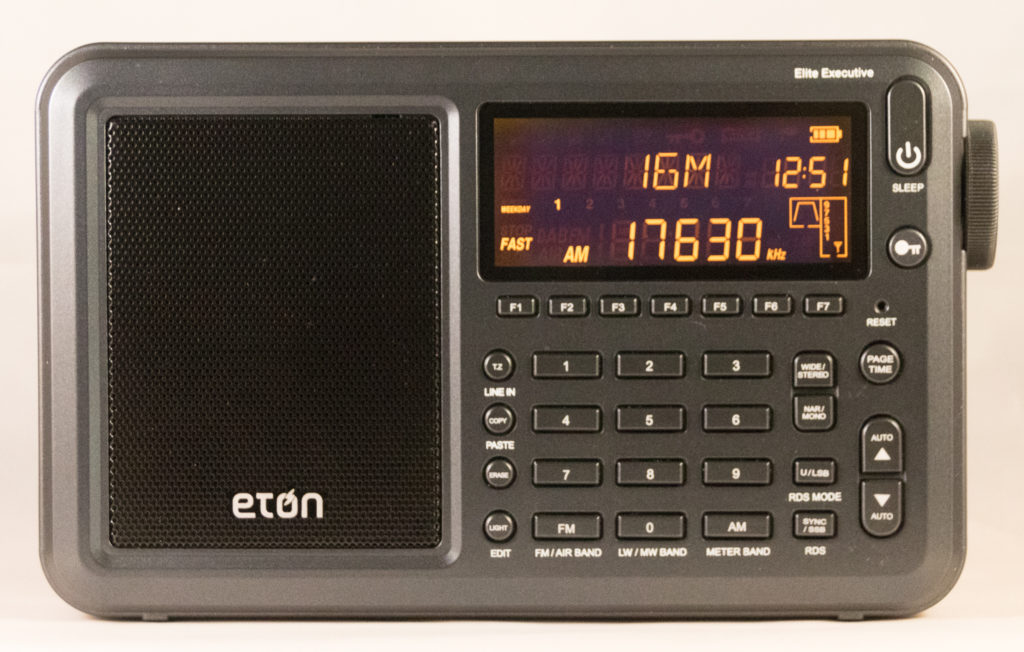
At least one review put the introduction date of the Eton Elite Executive at November of 2019. There is a “2017” string in my serial number, a date when the radio was called the “Satellit Executive.” It appears that the circuit boards in both are the same, and some Elite Executive PCBs are dated 2015, so it is at least conceivable that the radio was made in 2017 and put in a newer case. I bought mine in February of 2022. The $250 “retail” price point seems rather crazy. I got mine on a blowout sale for $79.99 (maybe old stock). The current Amazon price of $199 seems a little high vis-à-vis the competition. Unlike the others, there are no published lists of hidden features, and no known way to display the firmware version.
Tecsun PL-660
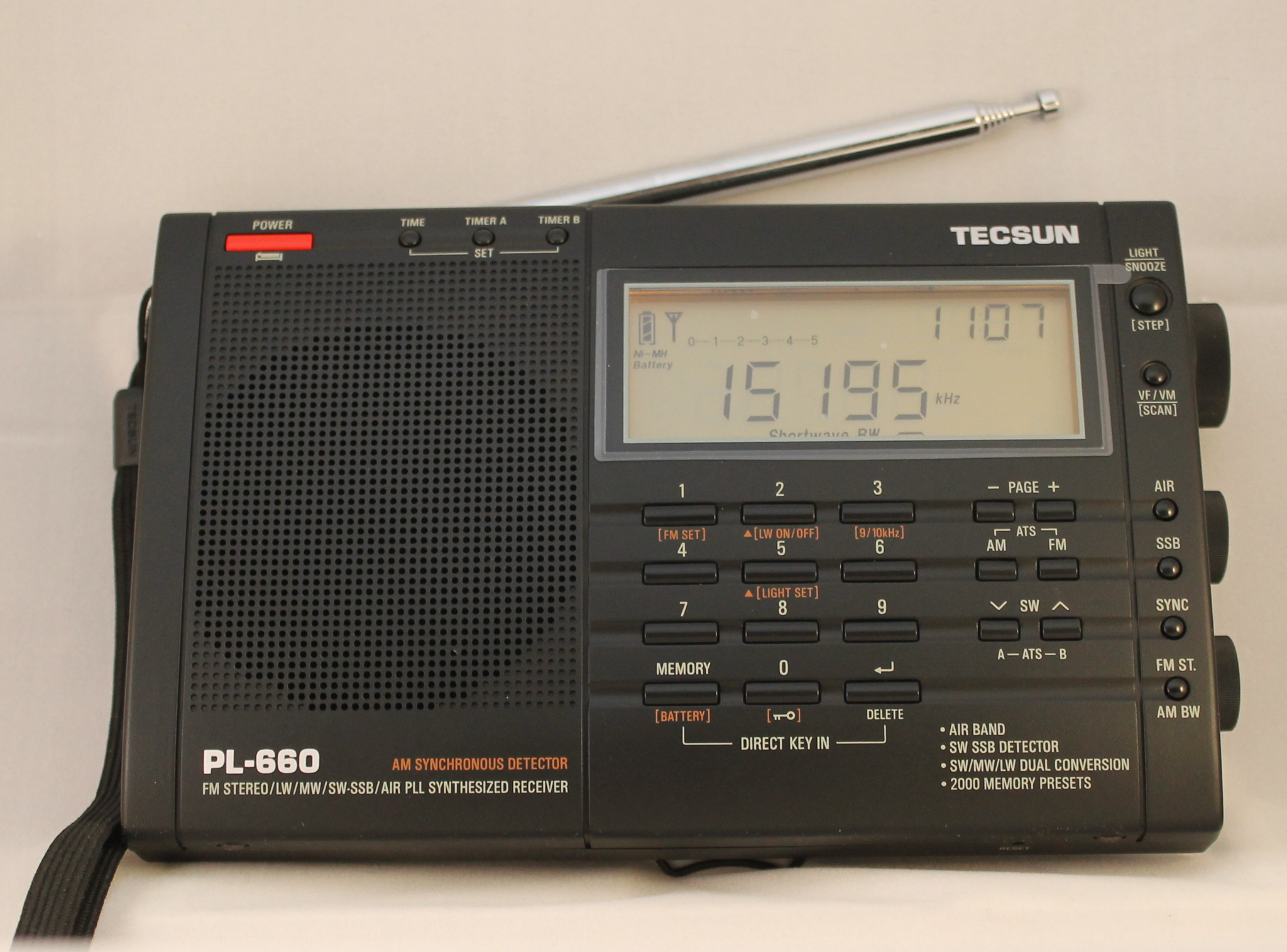
The Tecsun PL-660 tested here is from 2011 and was in production at least until 2020. Dave (N9EWO) has a comprehensive review of the radio, and notes among other things that there are many firmware versions, and widely varying quality over time. Mine is a very early model, and I have not had quality issues that I know about.
Tecsun PL-880
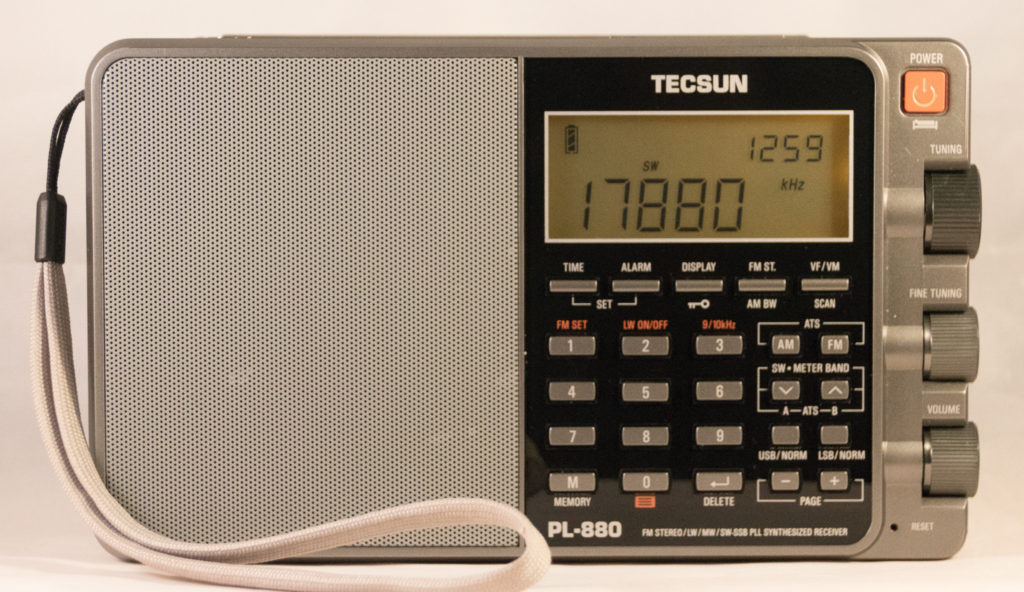
My PL-880 is from 2023. This radio seems to have been overshadowed by the introduction of the PL-990 with which it shares a great deal. Superseded or not, it’s viable product, and sold at a significantly lower price than the PL-990.
Tecsun PL-990
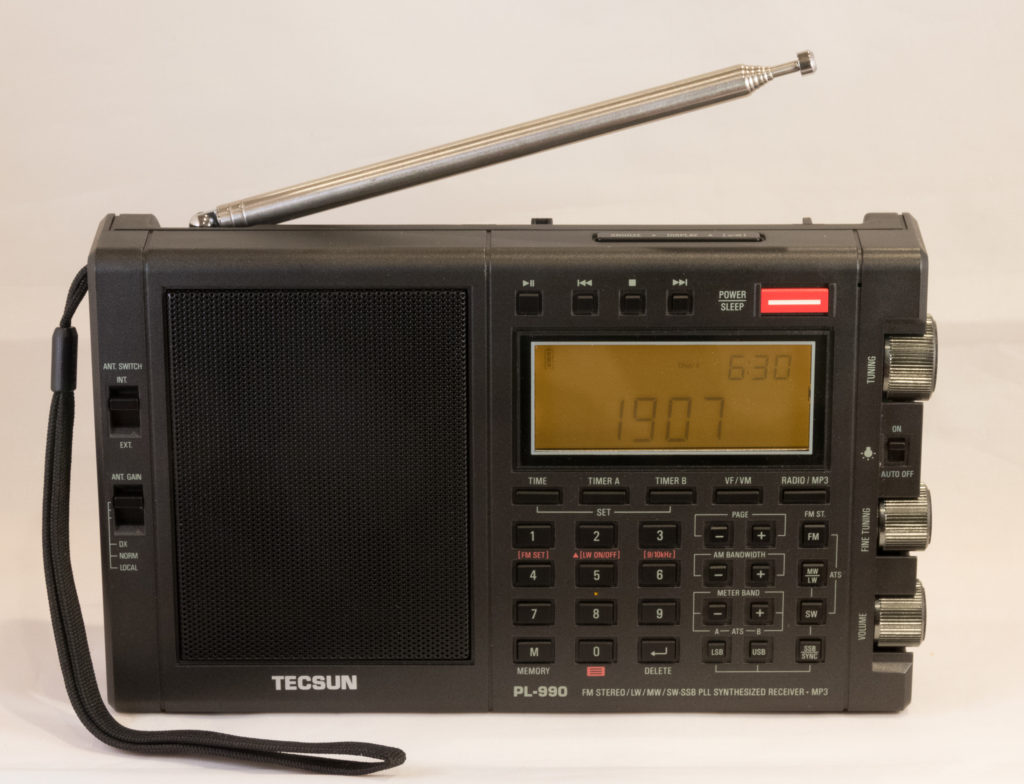
The serial number indicates my PL-990 was manufactured in August of 2021. I bought a pristine used unit from Kaito USA on eBay for $100 off the regular price. I’ve found next to nothing about firmware versions for this radio online; mine is 99028, and I don’t know what that little “8” means. This radio shares a lot with both its historical predecessor, the PL-880, and the compact PL-330 introduced a couple of years later.
The Plan
In this comparison, I want to cover the user experience, look at calibration, stability and drift, and talk about usability and convenience. I especially want to try to get some solid audio samples from each radio because there are definitely differences. I want to talk about quality and feel. And finally I want to spend some time on synchronous detection and SSB.
Usability and Convenience
One doesn’t want to be bugged by things when living with a radio. What bugs one person might not bug another. Rather than “Pros and Cons,” I’m listing the “Cons” first.
Things that bug me about the Eton Elite Executive
- It doesn’t have a wrist strap.
- It has a scroll wheel for the volume control. Trying to change the volume one handed just pushes the radio around on some surfaces.
- Many functions are complicated and unintuitive, requiring consultation with the manual. For example, charging requires consulting the manual to find the unlabeled button.
- No auto tune storage (ATS) on SW, MW or LW.
- The keyboard times out; pressing a button doesn’t work if no other button has been pressed recently. For example, pressing the power button will turn on the display light, but not the radio; that takes two presses. In operation, the keyboard times out frequently. Let’s say you listen to a station for 3 minutes, then want to key in the frequency for the next station — it drop’s the first digit.
- There’s no way to use the antenna jack for MW/LW.
- The manual has no table of contents.
- You have to fold out the antenna to put the radio in its fold-over case or remove it.
- I really don’t like having to switch tuning speed on the main tuning knob. A separate fine tuning knob is preferred.
- The radio falls over easily.
- It can’t be charged with a USB cable.
- It has tuning mute: chuff, chuff when tuning manually — not as loud as some.
Things that I like about the Eton Elite Executive
- The radio is a bit smaller than the others and is easier to hold.
- It looks high quality and polished.
- The the display is very easy to read in any light.
- The clock is displayed all the time.
- There are adjustable display brightness levels.
- FM RDS (the only one of the list that has it).
- Large raised buttons that work very reliably.
Things that bug me about the Tecsun PL-660
- The dial light is dim and won’t stay on for more than 30 seconds no matter how you set it.
- The BFO control is very sensitive and hard to set precisely.
- There’s no way to use the antenna jack for MW/LW.
- I really don’t like having to switch tuning speed on the main tuning knob. A separate fine tuning knob is preferred.
- The direction of the SCAN feature depends on the direction you last tuned the radio, and it’s often wrong; a dedicated button for each direction is preferred.
- The time set function times out too quickly, making it hard to wait until the exact second to set the clock.
- It can’t be charged with a USB cable. (There is a separate cost adapter.)
- I don’t like having just one single button for SSB that performs SSB on, USB, LSB, SSB off in that order when pressed. One cannot switch from LSB to USB without pressing pressing the button twice. Turning SSB on and off requires 3 presses.
- Buttons are uneven, with some recessed more than others (just mine?).
- The VF/VM modes irritate me. Turning the tuning knob or keying numbers does something different in the two modes, the single button toggles between modes and you can’t switch it unless you know what mode it’s in, which requires figuring out. Some radios like the XHDATA D-109 at least have separate VF and VM buttons. The Eton doesn’t have a VM mode at all.
- The auto tune storage scans include so many stations that are just noise that the memory page fills up before reaching the end of the scan.
- The signal strength meter is next to useless, pegged on 5 most of the time.
Things that I like about the Tecsun PL-660
- It seems quieter than the other radios
- It doesn’t chuff when tuning.
- SSB performance is superior.
- Synchronous detection is superior.
- The clock is always visible.
Things that bug me about the Tecsun PL-880
- There’s no way to use the antenna jack for MW/LW.
- Synchronous tuning is an undocumented feature that works poorly.
- The direction of the SCAN feature depends on the direction you last tuned the radio, and it’s often wrong; a dedicated button for each direction is preferred.
- The time set function times out too quickly, making it hard to wait until the exact second to set the clock.
- The single VF/VM buttons irritate me (See PL-660 preceding for details).
Things I like about the Tecsun PL-880
- I love the fine tuning control.
- Bass response with this speaker is phenomenal.
- Seconds on the clock.
- High quality knobs that are easy to turn one handed.
- Large raised buttons that work very reliably.
- 24+1 memory pages that lets one use a different page for each hour of the day.
Things that bug me about the Tecsun PL-990
- The direction of the SCAN feature depends on the direction you last tuned the radio, and it’s often wrong; a dedicated button for each direction is preferred.
- The time set function times out too quickly, making it hard to wait until the exact second to set the clock.
- The single VF/VM buttons irritate me (See PL-660 preceding for details).
- I hate tuning in VM mode with the tuning knob. It takes a vigorous near half a turn just to advance one memory position. I’ve never seen another radio (including the PL-880) that works this way. What were they thinking?
Things I like about the Tecsun PL-990
- I love the fine tuning control.
- Seconds on the clock.
- Switches for dial illumination, sensitivity and antenna selection are on the front panel rather than on the side.
- High quality knobs that are easy to turn one handed.
- Raised buttons that work reliably.
- 24+1 memory pages that lets one use a different page for each hour of the day.
- The external antenna jack works for LW/MW (the only radio in this group that does), and the performance with an antenna and ground is phenomenal on these bands.
Despite the rather long list of negatives for some of the radios, they are all things I can live with. Of all the radios, the Eton is the one I use least, but if this were the only radio I had, I wouldn’t feel deprived — as long as I still had the manual.
Audio
To test audio, I like to use my favorite music station, WWV/WWVH. The reason is the 100 Hz subcarrier that pulses with BCD-encoded time every second. The PL-660 and Elite Executive don’t make much of it. I can feel the vibration holding the PL-990. I can feel the vibration from the table under the PL-880 — it’s that much better.
The three Tecsuns have a Bass/Treble switch that I leave on Treble. The Eton doesn’t have a tone control.
The Eton is the only radio in the group with an audio input jack. The PL-990 is the only with Bluetooth or MP3 media playing. The common denominator will have to be FM, so for the test, the music tracks come from the YouTube Free Music library. The tracks are played on a budget Kaito KA29 radio/MP3 player through a bargain basement wireless FM transmitter, received on the test radios, and recorded off the air with a Blue Yeti USB microphone. While the KA29 is only so-so through its speaker, I’ve found the sound through headphones, where the FM transmitter is connected, quite good.
The tracks are added to a still photo of the radio to make a video for YouTube since that music is only free for use there. First, there is the original recording added to a photo of the KA29 (not played by it). Remember, this audio is only licensed for YouTube videos.
[Video coming soon]
Visual Impact
I give top marks for the Eton Elite Executive. The radio seems compact and all business to me. It has a metal speaker grill, nicely labeled keys, and an ultra precise display. I would have preferred a volume control knob rather than a wheel, but the tuning knob and wheel operate smoothly. The buttons are large and responsive. The function key buttons F1-F7 are small, but they aren’t used much and keeping them small allows the overall layout not to seem cluttered. There are 32 front panel buttons overall. The matte black is attractive, and I’m glad black is the color that replaced silver on the older Satellit Executive. It’s an attractive package. It also looks handsome in its carry case that snaps on with magnets. (I wish they had included some holes over the speaker.) The antenna feels sturdy and is the same length as the PL-660.
One negative is that the Eton falls over easily when placed vertically, so use the kickstand.
In second place, I put the Tecsun PL-990. The tuning and volume knobs are just superb to the feel. I think the speaker grill is plastic, but it’s so good that I’m not sure. The radio is a matte black that I really like. The front panel does seem busy, even without the 7 function keys of the Eton, this radio has 34 buttons, two more than the Eton. The radio feels solid, but it is also a bit bulky. The antenna is quite long, but the last segments are thin and require care in handling. The PL-990 shares the same zipper case design with the PL-880. It’s nice looking case although the zipper can be temperamental at times.
The PL-880 places a close third. I have a gray one, the only color I could get at the discount I received. Again, I’m not certain if the speaker grill is metal or plastic. What I don’t like is the shiny black background for the buttons. Reflections are not a good thing. The PL-880 reduces the number of buttons on the front panel to a more manageable 26. It shares the excellent knobs with the PL-990. The black model has silver knobs that I find more attractive. It’s a little less bulky than the PL-990, but still has a definitely “chunky” feel. The PL-880 shares the same antenna with the PL-990.
I put the PL-660 in last place. It comes in black or silver; mine is matte black. The front panel is oddly curved, not unattractive, but different. The speaker grill is obviously plastic. The buttons are thin and button presses a bit unreliable for me. There are 28 buttons total. It appears that different vertical rows of buttons protrude different amounts, making the 3-5-9 row almost flush with the panel (with a grove behind them). I thought mine might be defective, but I have noted others describing the same thing. The side buttons are a little less substantial compared to the other radios. The antenna is sturdy. The PL-660 is the same size as the PL-880, but its curved design makes it appear thinner and it doesn’t feel so chunky. It has plastic feet, while the other three have rubber. It also has a wire support on the bottom that pulls out to provide more stability. The case is a simple fold over Velcro closed pouch. It’s not fancy, but it is the most convenient of all the radios here. The radio doesn’t seem cheap by any means, but the others just seem higher quality.
SSB and Synchronous Detection
I’m not very experienced with SSB. What I can say is that my PL-660 is spot on in calibration and SSB is easy to tune. The BFO knob is almost always set correctly when placed at the dead-center detent. If I had a complaint, it would be that the knob is too sensitive. Later models of the PL-660 reportedly have a calibration hidden feature, but mine doesn’t have it, nor does it need it. Others have complained about the calibration at various stages of the product life cycle.
The other three radios use digital decoding for SSB and clarifying the signal is a matter of fine tuning, down to 10 Hz. The PL-880 and PL-990 display the actual frequency down to 10 Hz in SSB mode with the fine tuning knob switching to 10 Hz. The Eton has only one knob that has to be switched to do triple duty, one of which displays a +/- frequency offset rather than an absolute value. Carrier wave signals can be received the same way as SSB and each of the three DSP decoded radios have narrower bandwidth filters to accommodate SSB and CW.
The PL-880 and PL-990 have a calibration procedure that supposedly allows the radio to tune SSB with just setting the frequency. So far I have not been able to calibrate the radio so that it stays calibrated. This may be due to environmental temperature or the radio heating up after use. I use my radios more often outdoors rather than in a conditioned temperature space. Calibration is a hidden feature and I always wonder whether the radio has to be calibrated separately for LSB and USB or not. The way I calibrate the radios is to tune to Canadian time station CHU in AM mode and then switch to SSB. I consider it on frequency when the pitch heard is the same as that of the station’s tones. Calibration on the PL-880 is set by a long press of the Display button on the top of the radio. A long press of either the LSB or USB button calibrates the PL-990.
The Eton has no calibration feature. Mine seems dead on for USB and about 300 Hz or so off for LSB.
I find fine tuning SSB to be difficult particularly on weak signals on the three DSP radios, and that the quality is better on the the analog PL-660. I refer the reader to my article SSB! for some video of the Eton, PL-660 and PL-880. The PL-880 and PL-990 are fairly similar, although the PL-990 may have a touch less distortion when the sound starts after a pause.
In Synchronous Detection, an AM signal is processed like an SSB signal after discarding one sideband and replacing the carrier with one generated by the radio. The carrier generated is synchronized in frequency to the original signal. The result can make signals with selective fading sound better by discarding a fading sideband or removing distortion from a fading carrier. The radios can synchronize on either the upper or lower sidebands.
While sync is intended to deal with fading, it can also have a side benefit in some instances of making a signal stronger. One complaint about the PL-660 is its soft muting, suppressing signals that are very weak. In sync mode, the PL-660 doesn’t mute (or mute as much), allowing weaker signals to be processed. I’ve observed this advantage on the PL-660, but not on any of the DSP decoded radios.
In order for sync to work well, the radio must be able to determine the frequency of the incoming carrier frequency, and this can be a problem on weak signals. Synchronous detection is a hidden feature on the PL-880 (long press the USB or LSB buttons) and it doesn’t sync well on weak signals.
Value
In my opinion the PL-990 is very overpriced. There are entire radios for $25 that have Bluetooth and MP3 playing capability, and the PL-990 with these features costs $100 more than the PL-880 without them. I would never have considered buying a new PL-990 at the current price. The pristine used one I got for the same price as a PL-880, however, was OK.
I think the prices for the other three radios, Eton Elite Executive, Tecsun PL-660 and PL-880 are reasonable in comparison to the competition. They are all well-made radios that perform well. Rather than buying a PL-660, one might consider its successor, the PL-680, that today is selling for the same price. I’ve heard that the PL-680 speaker is a bit better and that it is more sensitive on shortwave (but not MW). It’s also noteworthy that the two lowest priced in this group are the ones with AIR band.
Which one should you buy? If I knew that, I wouldn’t have 4 radios sitting here. For use as a travel radio, I wouldn’t pick any of them, opting instead for a lower-priced Tecsun PL-330. I certainly would not buy or recommend the PL-990 at anywhere near its full retail price. If I wanted a good radio at a good price, particularly if SSB were a priority, I’d probably skip them all and go for the Tecsun PL-680. The PL-880 has a very nice speaker and a ton of preset station memories. The Elite Elite Executive is attractive looking, has AIR band plus FM RDS and gets the same stations.
Update
It’s been two months since I wrote this post. I find that I’m using the PL-990 the most of all my radios. It looks drop dead gorgeous, the controls are high quality, the controls are convenient, and the radio is sensitive. It lacks AIR band, but I never listen to AIR band. It lacks FM RDS, but I never use that feature either, and the few local FM stations that broadcast RDS don’t include time. The PL-880, despite its phenomenal speaker, sits on the shelf. The Eton Elite Executive gets the most play downstairs and the PL-660 mostly sits on the shelf, only consulted when I need the best sync detection.
Update 2
I sold my PL-880, since my PL-990 duplicates the features of the PL-880 and adds more.

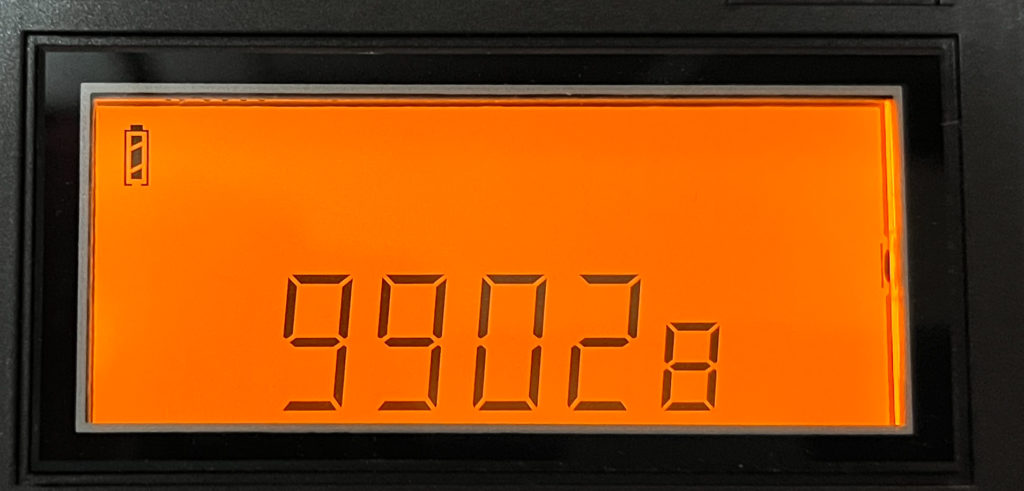
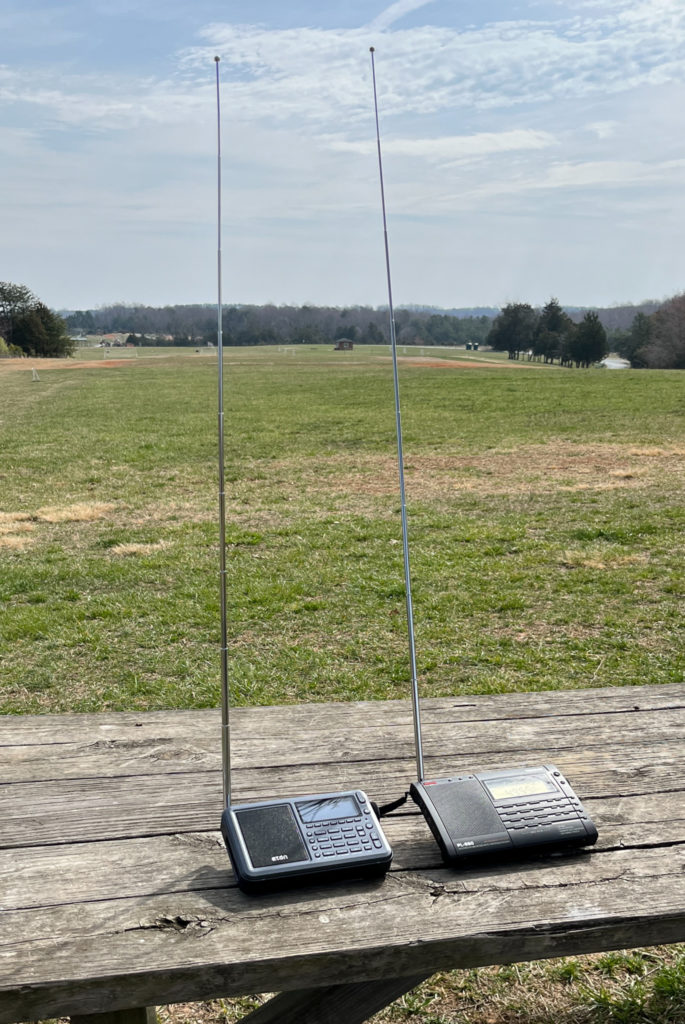

 [robot emoji] symbol. Content comes most often from Microsoft Copilot, bit may also come from Perplexity, ChatGPT or Deep Seek.
[robot emoji] symbol. Content comes most often from Microsoft Copilot, bit may also come from Perplexity, ChatGPT or Deep Seek.
Hi Kevin, I have recently ordered a PL 680 from Anon. I opted for it leaving behind the cheaper PL 330 as I feel analog signals are ‘true’ unlike the DSP signals which have an artificial aura to them. For the same reason I dropped Xhdata D808. I mostly listen to sw with occasional ham. Now what’s your take on that?
Hi , next week is arriving the PL 990X and the PL 680 to my home , do you think is good combo? Or do I need to purchase another radio to covered that the PL990X, PL 680 functions lacks? Best Regards
Those are two fine radios. With the PL-680 you will pick up air band, and the PL-990 will allow you to use an external antenna on MW/LW. Also the PL-990 has a wonderful speaker.
The one thing you won’t get is FM RDS display, but it’s not terribly useful in my opinion. Check out my article:
RDS / RBDS: FM on Display